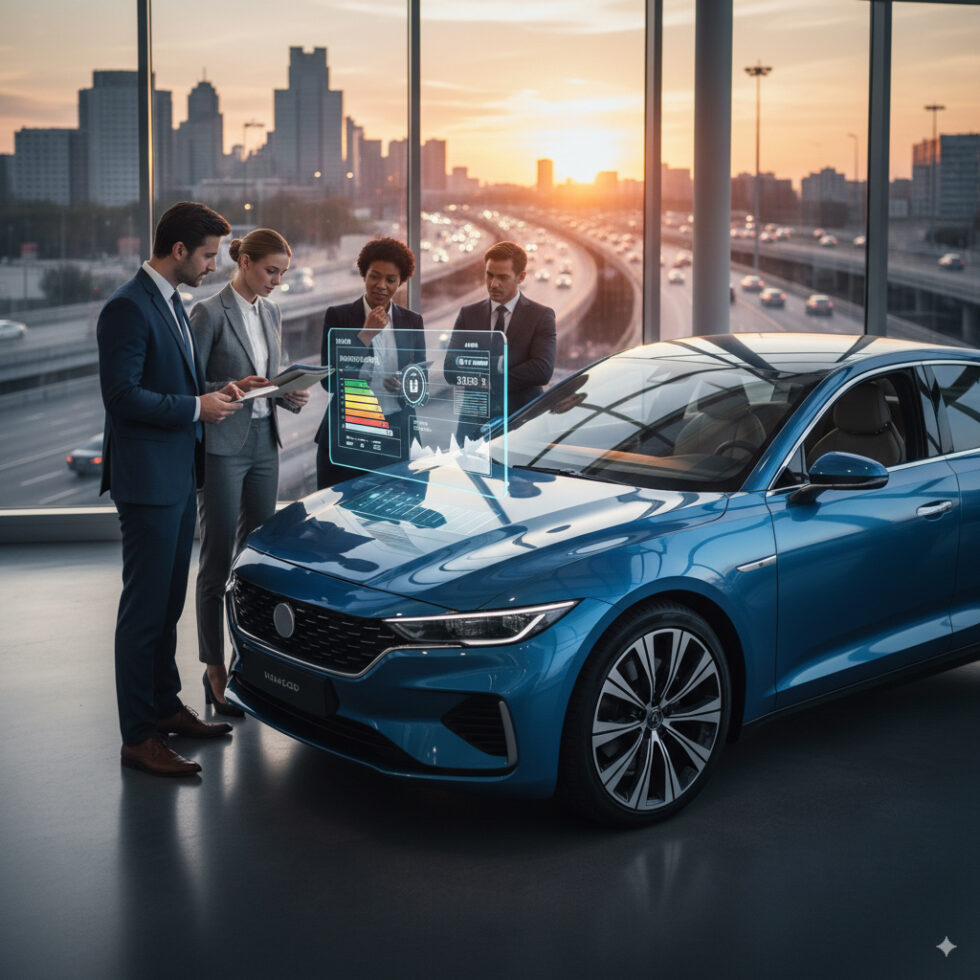
Buying a new car sounds simple: pick a model you like, sign papers, drive off. In practice, it’s a chain of decisions that affect your money, safety, comfort, privacy, and daily routine for years. A smart purchase isn’t about chasing a single stat like horsepower or range. It’s about aligning what you buy with how you live, how much you spend over the whole ownership cycle, and what you’ll need next year and the year after that.
This guide breaks down the process into practical pieces. It goes beyond sticker prices to the costs you’ll actually face. It compares powertrains in plain language. It explains safety, driver-assistance tech, and data privacy without hype. And it gives you a step-by-step plan from first browse to delivery day checks. If you follow it, you’ll reduce surprises and buy with clarity.
Start With Your Real Needs
Most regrets come from buying for the rare trip, not the everyday drive. Begin with your routine and constraints. Be honest about how you’ll use the car 95% of the time. Let reality set the spec, not marketing.
Define the job the car must do
- Passengers: How many seats do you need daily? How often do you carry five adults? Do you need three car seats across?
- Cargo: Measure the biggest items you transport. Strollers, instruments, sports gear, or a folding bike can dictate trunk size and opening shape.
- Roads and climate: Do you face snow, ice, heavy rain, unpaved roads, steep hills, or tight city parking?
- Commute: How many miles per day? How often do you sit in traffic? Is your parking spot covered, on-street, or a garage with outlets?
- Towing and roof loads: Confirm the rated capacities, hitch availability, and roof rail compatibility you need.
List must-haves, nice-to-haves, and deal-breakers
Write them down. Examples:
- Must-haves: Automatic emergency braking, Apple CarPlay/Android Auto, heated seats if you live in cold climates.
- Nice-to-haves: Panoramic roof, power liftgate, premium audio.
- Deal-breakers: No spare tire, cramped rear headroom, excessive road noise.
Think ahead two or three years
Will your household size change? Will you move to a home with charging access? Are you likely to switch jobs and change your commute? Planning forward prevents mismatches later.
Budget and Total Cost of Ownership
Focusing on sticker price alone is the fastest way to overspend. What matters is total cost of ownership (TCO): what you pay to buy, power, insure, service, and eventually sell the car. Build your budget around the full picture.
Out-the-door price vs. monthly payment
- Out-the-door (OTD) price: Vehicle price plus destination, taxes, registration, documentation, and any add-ons you accept. This is the number to compare across dealers and quotes.
- Monthly payment: Driven by OTD price, down payment, interest rate, and term length. Don’t stretch to a longer term just to “afford” a higher price. It increases interest cost and makes you upside down longer.
Build a TCO model
Add these items for the first 5 years (or your planned ownership period):
- Depreciation: The biggest cost. Typical mainstream vehicles may lose 45–60% of value in 5 years, luxury often more, some trucks and hybrids less. Newer tech, rapid refresh cycles, and incentives can move this number.
- Insurance: Varies by model, trim, safety features, and your location and history. Collision repair costs affect premiums; some advanced headlights and sensors are pricey to replace.
- Fuel or energy: Use official economy data and your actual mileage. For EVs, factor home charging rates vs. public charging prices and any time-of-use plans.
- Maintenance and repairs: Oil, filters, tires, brake pads/rotors, coolant, spark plugs, cabin filters. Hybrids and EVs may cut some routine work but watch tire wear and brake service intervals.
- Taxes and fees: Sales tax, property or excise tax where applicable, registration renewals, emissions inspections, or EV-specific fees in some states.
- Financing costs: Interest on a loan or money factor on a lease. Pre-approval helps you compare rates.
How depreciation behaves
- New models with unknown reliability may dip faster early on.
- Models with fleet sales or heavy discounts can lose value quickly.
- Conservative colors and popular options usually keep resale stronger.
- EVs can be sensitive to incentives, battery tech upgrades, and charging improvements. Watch how new releases change the used market.
Choose Your Powertrain Wisely
Gas, hybrid, plug-in hybrid, and battery electric can all be good choices if matched to your use. Start with where you’ll refuel or charge most of the time and how far you drive daily.
Gasoline or diesel
- Pros: Wide refueling network, fast fill-ups, broad model choice, lower upfront cost than many hybrids and EVs.
- Cons: Higher fuel costs per mile than efficient hybrids or EVs, more maintenance items over time, emissions restrictions in some cities.
- Use cases: Long highway trips, remote areas with limited charging, towing where diesel torque helps.
Conventional hybrid (HEV)
- Pros: Excellent city efficiency, low maintenance compared to many gas-only models, no charging required.
- Cons: Slightly higher upfront cost; battery packs last a long time in most designs but confirm warranty length.
- Use cases: Mixed city/highway driving, heavy traffic commutes, buyers seeking lower fuel bills without charging logistics.
Plug-in hybrid (PHEV)
- Pros: Daily electric miles if you charge, no range anxiety on road trips, often eligible for incentives.
- Cons: More complex than HEVs or BEVs; real-world economy depends on consistent charging. Trunk space can shrink due to battery placement.
- Use cases: Short daily commutes with home or workplace charging. Occasional long trips.
Battery electric (BEV)
- Pros: Very low running costs on home charging, quiet drive, instant torque, fewer moving parts, no oil changes.
- Cons: Upfront cost can be higher before incentives, charging access must be reliable, cold weather can reduce range, public fast charging prices vary.
- Use cases: Predictable daily miles, home charging available, access to reliable fast charging for trips if needed.
Charging details that matter
- Home setup: Level 1 (120V) adds ~3–5 miles/hour. Level 2 (240V) adds ~15–45 miles/hour depending on onboard charger. Check panel capacity and install costs.
- Battery warranty: Many cover 8 years/100,000 miles or more, often for capacity retention. Verify exact terms.
- Thermal management: Liquid-cooled packs handle heat and fast charging better. If you road trip in hot or cold climates, this matters.
- Charging curve: Peak kW isn’t the full story. How long the car sustains high rates affects stop length.
Match powertrain to your duty cycle
If your daily trip is 25 miles and you can plug in, a PHEV or BEV might slash costs. If you drive 250 miles in remote areas with no charging, a hybrid or efficient gas model may be smarter. Your routine dictates the winner.
Safety First: Ratings, Features, and What They Really Do
Safety isn’t a single score. It’s crash structure, restraint systems, visibility, headlights, tires, and driver assistance that prevents trouble.
Crash tests and what to look for
- Multiple ratings: Check both IIHS and NHTSA. Aim for strong results across small overlap, side, roof strength, and head restraints, not just one headline score.
- Headlights: Many trims differ. Good headlights reduce night risk. A base trim with poor headlights may not be as safe as an upper trim with better ones.
- Rear-seat safety: Updated tests highlight rear passenger protection. If you carry kids or adults in back often, pay attention here.
Active safety and driver assistance
- Automatic emergency braking: Should detect vehicles and ideally pedestrians/cyclists. Confirm it’s standard on your trim.
- Adaptive cruise and lane centering: Reduces fatigue but needs driver supervision. These are not self-driving systems.
- Blind-spot monitoring and rear cross-traffic alert: Helpful in urban parking and multi-lane roads.
Try these features on your test drive. Note false alarms, smoothness, and how easy it is to adjust sensitivity. Confidence comes from tuning, not just a checkbox.
Brakes, tires, and visibility
- Ensure firm, predictable braking with no wandering under hard stops.
- Check tire quality on the exact trim; some models ship with eco tires that reduce grip. Budget for a better set if needed.
- Assess sightlines: thick pillars and small rear windows add blind spots. Try reversing out of a tight space.
Reliability, Service, and Warranty Coverage
Peace of mind boils down to two questions: How often will this car need attention, and how easy is it to get that attention?
Reliability signals
- Historical data for the brand and the specific model generation, not just the nameplate.
- Powertrain maturity: A new engine or battery pack may present early issues. Proven components usually fare better.
- Parts availability and service network density—especially important for road trip peace of mind.
What warranties cover
- Bumper-to-bumper: Usually 3 years/36,000 miles, covering most components except wear items.
- Powertrain: Often 5 years/60,000 miles or more.
- Hybrid/EV batteries: Commonly 8–10 years and 100,000–150,000 miles, sometimes with capacity thresholds.
- Roadside assistance: Can be a useful tie-breaker, but read what’s included.
- Extended warranties: Useful if competitively priced and backed by the manufacturer. Third-party plans vary widely—scrutinize coverage, deductibles, and cancellation terms.
Software and updates
Modern cars are rolling computers. Over-the-air (OTA) updates can fix bugs and add features. They can also introduce new quirks. Check how often updates occur, how they’re communicated, and if you can schedule them. A good service experience includes clear software support.
Tech, Infotainment, and Data Privacy
Convenience tech is great when it works and infuriating when it doesn’t. Decide what you need and how you’ll protect your data.
Infotainment basics to test
- Boot time and responsiveness of the screen and voice assistant.
- Wireless vs. wired CarPlay/Android Auto stability and audio quality.
- Physical controls for climate and volume—less distraction is safer.
- Navigation accuracy, especially EV route planning if applicable.
Subscriptions and feature locks
Some makers sell heated seats, advanced driver assistance, or connectivity as subscriptions. Add up recurring costs. Check whether the function still works if the subscription ends, and whether it affects resale.
Data collection and privacy
- Read the vehicle’s privacy policy and app permissions.
- Decide what’s shared: trip logs, voice data, camera footage, location history.
- Ask how to opt out, delete data, or prevent sharing with third parties.
- Confirm procedures when you sell the car: factory reset, account unlinking, key revocation.
How It Drives: The Test Drive That Reveals the Truth
Paper specs don’t convey ride quality, visibility, or seat comfort. Schedule appointments to test cars back-to-back on the same day if possible.
A structured test drive
- Ergonomics: Adjust seat height, lumbar, and steering wheel reach. Simulate a two-hour posture.
- Noise: Listen at 30, 50, and 70 mph. Pay attention to wind noise around mirrors and roof rails.
- Ride and handling: Speed bumps, expansion joints, and a quick lane change tell you a lot.
- Parking: Practice tight turns and reverse parking. Check camera resolution and lens cleanliness.
- HVAC and defogging: Does the windshield clear fast? Are rear vents adequate?
- Driver-assist smoothing: Try adaptive cruise and lane centering. Is it confident or ping-ponging?
Bring your life with you
- Install your child seat with LATCH and belt. Check access and fit.
- Load your stroller, skis, or guitar case.
- Pair your phone, stream your playlists, place a call with the windows up and down.
Where and How to Buy
You can buy from a dealer, a factory-direct seller, or an online marketplace with local delivery. Each has trade-offs.
Dealer vs. direct
- Dealer: Inventory on hand, trade-in convenience, more negotiation room, but also upsells and fees. Service is usually nearby.
- Direct: Transparent pricing and online ordering, often fewer hidden fees, but delivery timelines vary and service centers may be farther.
Build-to-order vs. lot inventory
- Build-to-order: Get the exact options and color. Wait times range from weeks to months. Historically lower risk of dealer add-ons.
- Lot inventory: Immediate availability and sometimes bigger discounts, but may include unwanted packages or aftermarket add-ons.
Negotiation that stays simple
- Request out-the-door quotes by email from multiple sellers for the same stock number or build code.
- Have a pre-approved loan from your bank or credit union. Let dealers try to beat that APR, not your budget.
- Negotiate the purchase price and trade-in value separately.
- Be polite, say no to add-ons you didn’t plan, and be ready to walk away. Time pressure works against you.
Financing vs. leasing
- Financing: You own the car when the loan ends. Good for long-term keepers and high mileage.
- Leasing: Lower monthly payment, but mileage limits, wear charges, and less flexibility. Check the money factor (interest), residual value, and acquisition/disposition fees.
- Rule of thumb: If you drive a consistent, low annual mileage and want a new car every 3 years, leasing can work—especially with strong residuals. If you want the lowest TCO, buying and keeping the car longer often wins.
Insurance before you sign
Get quotes for the exact VIN or at least the trim and safety features. A model with better crash avoidance or inexpensive parts can be cheaper to insure. Lender requirements may include comprehensive and collision coverage with specific deductibles.
Incentives, Taxes, and Fees
Your final price depends on programs and rules that can change quickly. Confirm everything in writing.
EV and PHEV incentives
- Federal credits can be point-of-sale in some cases, reducing the price immediately. Eligibility depends on income, battery materials, assembly location, and MSRP caps. Always verify current rules.
- State and utility incentives can add rebates, tax credits, or home charger discounts. Some offer HOV lane access with clean-air decals.
Other discounts
- Loyalty or conquest bonuses for switching brands.
- College grad, military, or first responder programs.
- Fleet or partner pricing through your employer or membership clubs.
Taxes and fees to expect
- Sales tax on the vehicle price (sometimes net of trade-in).
- Title and registration fees, which vary by state and weight.
- Documentation fee, which may be capped by law in some states and not in others.
- Destination charge from the manufacturer—standard and non-negotiable in most cases.
Resale and Your Exit Strategy
Think about who will want your car when you’re done with it. That future buyer shapes resale value.
Options that help or hurt
- Help: Safety packages, heated seats, all-wheel drive in snowy regions, adaptive cruise on highway-focused cars.
- Hurt: Niche colors, rare wheel sizes that make replacement tires costly, options that require subscriptions to function.
Condition and records
- Keep service receipts and a log. Many buyers pay more for documented care.
- Repair windshield chips and curb rash early. Small issues grow.
- Protect interiors with all-weather mats if your climate calls for it.
Market timing
- New model launches can depress outgoing model resale.
- Fuel price swings shift demand for efficient cars or trucks. It’s hard to predict, but it’s worth watching before you sell.
Delivery Day: Inspection and Paperwork
Slow down at delivery. An extra 20 minutes saves future trips.
Pre-delivery checklist
- Walk around in daylight. Check paint, panels, and glass for chips or misalignment.
- Verify the VIN matches your paperwork and your insurance.
- Confirm odometer reading is reasonable for a new car (often under 100 miles).
- Test headlights, turn signals, wipers, windows, locks, and doors.
- Pair your phone, test CarPlay/Android Auto, and ensure audio and microphones work.
- Confirm included items: spare tire or inflator kit, jack, towing eye, two key fobs, owner’s manual, charging cable for PHEVs/EVs.
- For EVs, verify software version, charging limit settings, and that the charge port opens, locks, and closes smoothly.
- Set up driver profiles, door lock settings, and safety feature defaults.
Paperwork essentials
- Buyer’s order with final OTD price, all fees, and line-item discounts or incentives.
- Finance or lease contract with rate, term, payment, total of payments, and any prepayment penalties.
- Title and registration application; temp tag dates are correct.
- Service and warranty booklets, roadside assistance phone numbers, and schedule of maintenance.
- For leased cars: mileage allowance, excess wear rules, and end-of-lease options in writing.
Edge Cases and Special Considerations
Some needs sit outside the average buyer’s checklist. If any of these apply, dig deeper.
Towing and hauling
- Confirm the exact tow rating for your engine, axle ratio, and package. Not all trims tow the same.
- Check tongue weight and payload after accounting for passengers and cargo.
- Look for integrated trailer brakes, hitch receivers, cooling upgrades, and tow mirrors where appropriate.
Cold and hot climate care
- Look for heated steering wheel, heated rear seats, and remote start or preconditioning.
- For EVs, ensure battery preconditioning is supported before fast charging in extreme cold.
- In hot regions, ventilated seats and high-quality window tint can curb fatigue.
Accessibility and fit
- Tall drivers: Check headroom with a sunroof, seat track length, and thigh support.
- Short drivers: Verify seat height adjustment, pedal reach, and visibility over the hood.
- Mobility devices: Test loading scooters or wheelchairs and verify anchor points.
Home charging and HOA rules
- Condo and HOA communities may require approval for charging installations. Ask about shared meter rules and panel capacity.
- Seek an electrician’s load calculation before committing to a Level 2 charger.
Common Myths to Skip
- “Premium fuel is always better.” Use the octane recommended in the manual. Higher octane rarely adds power in engines not designed for it.
- “You must service at the dealership to keep warranty.” You must follow the schedule and keep receipts; you can use qualified independent shops for most work.
- “New engines need an early oil change to remove metal shavings.” Modern engines don’t require this unless your manual specifies otherwise.
- “Undercoating and paint sealants are mandatory.” Evaluate based on climate; many are overpriced dealer add-ons.
- “Nitrogen in tires is a must.” Proper inflation is what matters. Air already contains nitrogen.
- “Lifetime fluids mean never change.” Follow the severe service schedule if your driving fits those conditions.
Put It All Together: A Practical Buying Plan
Week 1: Clarify needs and money
- List your must-haves and deal-breakers.
- Set a realistic OTD budget and monthly limit with cushion.
- Pre-approve financing with your bank or credit union.
Week 2: Shortlist and research
- Pick 3–5 models that meet your needs across body style and powertrain.
- Check safety ratings, fuel economy, incentives, and insurance estimates.
- Read the warranty terms and owner forums for recurring issues.
Week 3: Test and compare
- Schedule back-to-back test drives with your phone, child seat, and cargo items.
- Drive highway, city, and a rough patch. Try driver assist and infotainment.
- Pick a favorite and a runner-up.
Week 4: Offers and negotiation
- Email dealers for OTD quotes on your exact configuration. Include your zip code and that you have pre-approved financing.
- Request itemized fees and ETA for build-to-order.
- Choose the best total package: price, timing, and service convenience.
Before delivery
- Bind insurance for the VIN.
- Prepare payment and confirm final OTD in writing.
- Bring your driver’s license, proof of insurance, and a printed checklist.
Environmental Footprint and Energy Use
Beyond cost, consider the impact of your choice.
Fuel economy and emissions
- Compare official ratings and real-world reports. The difference between 25 and 35 mpg is hundreds of dollars a year for many drivers.
- Hybrids and efficient gas engines can cut city emissions. EVs shift emissions to the power grid, which may be getting cleaner over time.
EV charging sources
- Home charging with off-peak rates can reduce costs and emissions if your utility supports renewables or time-of-use plans.
- Public fast charging is convenient but usually pricier than home charging. Plan for trip-only use if possible.
Battery longevity and care
- Use scheduled charging to avoid sitting at 100% if you don’t need full range.
- Precondition in extreme temperatures to protect the pack and improve charging.
Why Timing Matters
Supply, incentives, and model cycles shift prices and availability.
End-of-month and end-of-quarter
Sales targets can improve bargaining positions. It’s not magic, but it can help.
New model year changes
If a model refresh adds safety features or improved engines, waiting may be worthwhile. Conversely, you can find deals on outgoing models if they still meet your needs.
Seasonal advantages
- Convertibles cost less when it’s cold; AWD crossovers less when it’s warm. Demand cycles affect pricing.
Practical Tools and Checks
- VIN decoders verify options and build location.
- Insurance estimators help compare trims before you commit.
- Fuel cost calculators translate mpg or kWh/100 mi into dollars per year.
- Charging maps show real station availability on your routes.
- Dealer reviews focus on service department quality, not just sales friendliness.
Final Thought
Car buying rewards preparation. The right car is not the one with the most features or the best ad. It’s the one that quietly does your daily job, costs what you expect over years, keeps you safe, respects your data, and sells for a fair price when you’re ready to move on. Decide what matters up front, test it in the real world, and keep your numbers straight. That’s how you buy once and enjoy every mile.
Summary:
- Start with your real use case and list must-haves, nice-to-haves, and deal-breakers.
- Budget by total cost of ownership, not just monthly payment or sticker price.
- Choose a powertrain that fits your routine—gas, hybrid, PHEV, or EV—based on fueling/charging access.
- Prioritize safety by reviewing both IIHS and NHTSA ratings and testing driver-assist features yourself.
- Check reliability data, warranty terms, and service network reach for your short list.
- Test infotainment, subscriptions, and data privacy options; confirm what features cost over time.
- Negotiate the out-the-door price with multiple quotes, and separate trade-in from purchase price.
- Compare financing vs. leasing using APR or money factor and residuals; pre-approve your loan.
- Stack incentives, understand taxes and fees, and verify EV/PHEV eligibility before signing.
- Plan for resale with common colors and useful options; keep service records.
- Inspect the car at delivery and verify all paperwork, keys, and included items.





